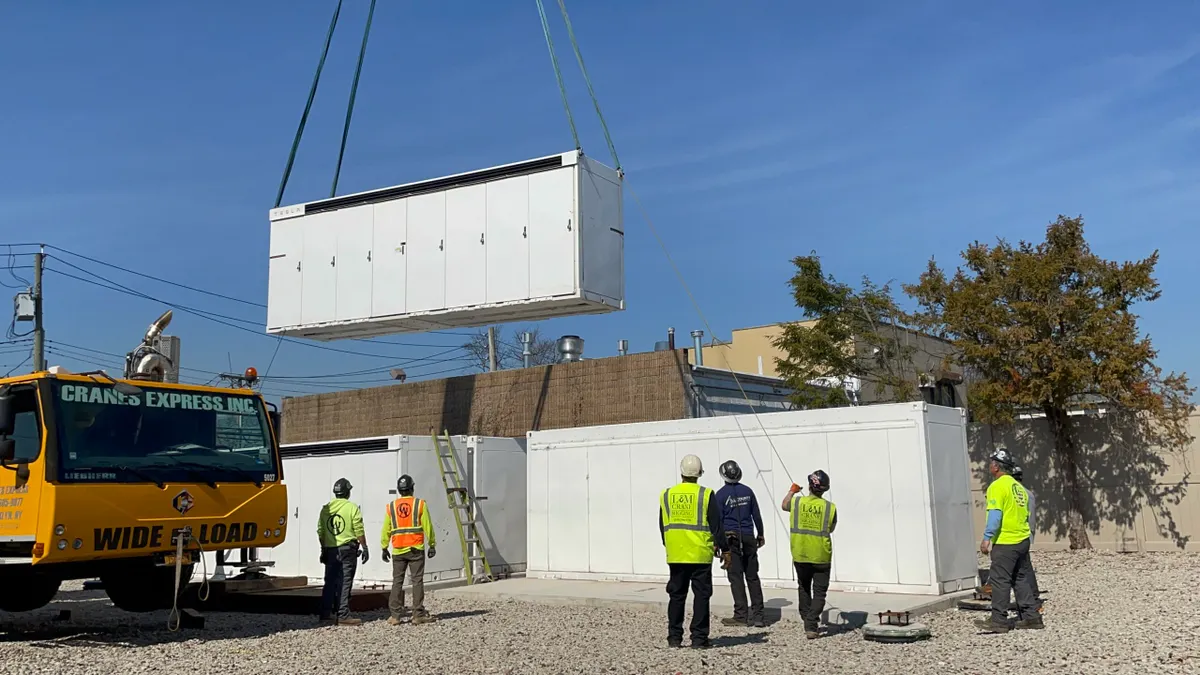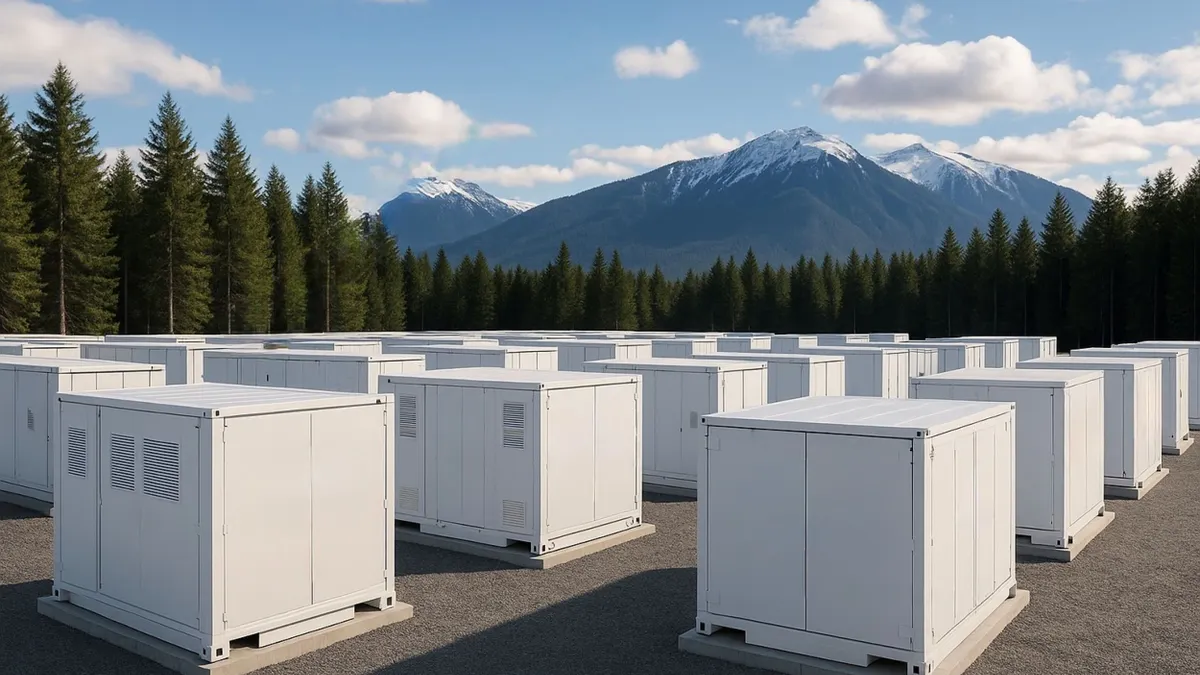This is the latest installment in Utility Dive’s “Taking Charge” series, where we engage with power sector leaders on the energy transition.
New York announced a $5 million solicitation for grid-connected long-duration energy storage projects last month, following on more than $30 million in LDES awards since 2022. The state envisions up to 6 GW of energy storage capacity on the New York Independent System Operator grid by 2030 as renewables replace retiring fossil-fuel plants.
But the Empire State’s 2030 goal pales in comparison to the up to 37 GW of LDES capacity the California Energy Commission said in January could be needed by 2045 if the state retires its natural gas generation assets.
Grids like California’s — already heavily weighted toward renewables and all but certain to continue decarbonizing — are “leading lights” for Hydrostor, a Toronto-based company that develops and operates energy storage systems that use compressed air, rock and water, co-founder and CEO Curtis VanWalleghem told Utility Dive.
Hydrostor is moving ahead with plans for a $1.5 billion, 500-MW/4-GWh storage project in Kern County, California, that is “on pace to meet California’s late-decade needs for long duration energy storage,” Hydrostor President Jon Norman said in March. Dubbed Willow Rock, it’s Hydrostor’s third planned utility-scale project after an operational demonstration facility in Ontario and a 200-MW/1.6-GWh facility under development in Australia, VanWalleghem said.
A twist on compressed-air energy storage
Energy storage facilities built by Hydrostor, whose main U.S. office is in Denver, use a patented “advanced compressed-air energy storage solution,” VanWalleghem said.
The system uses surplus or off-peak grid energy to produce heated, compressed air, then extracts the heat for use later in the discharge process, according to an overview on Hydrostor’s website. Next, it sends the cooled, compressed air deep underground for temporary storage in purpose-built caverns that use a water reservoir to increase the density of the surrounding land and maintain system pressure. When the system is ready to discharge, it releases the water weight, sending air back up to the surface to be recombined with the stored heat and blasted through a turbine to produce electricity.
The technology’s “sweet spot” is eight to 24 hours’ storage duration, VanWalleghem said.
Compressed-air and thermal storage are both cheaper than lithium-ion batteries for durations longer than eight hours, according to a May report from BloombergNEF. Meanwhile, compressed air is one of only three longer-duration energy storage technologies — along with lithium-ion batteries and pumped hydro — that VanWalleghem says can readily get project financing right now.
“Not every market is ready”
But the fact that Hydrostor’s technology is “bankable” today, according to VanWalleghem, doesn’t mean it’s profitable to deploy anywhere.
“Not every market is ready for long-duration storage yet,” he said.
Though Hydrostor’s capital costs are comparatively low — just over $3,000/kW on a 10-hour system and about $50/kWh per additional hour of storage today, with a “clear path” to a further 20% cost reduction, according to VanWalleghem — the challenge for any longer-duration storage technology is the dearth of market incentives for durations longer than 10 hours, said Vanessa Witte, senior research analyst for energy storage at Wood Mackenzie.
“Longer-duration storage economics are actually a really big issue because these systems are expensive,” Witte said.
Grid operators can incentivize longer-duration storage through programs that compensate storage system owners for providing grid services or meeting resource adequacy over longer periods of time, Witte said. Versions of the Electric Reliability Council of Texas’ grid services program, which effectively incentivizes 2-hour durations, and the California Independent System Operator’s resource adequacy rules, which support 4-hour durations, could establish market signals for LDES systems, she said.
“We need to start valuing the full contributions that LDES and other flexible resources provide to the grid,” including backup for periods of low renewables production, resource adequacy and grid services like frequency regulation and inertia, former Federal Energy Regulatory Commission Chairman and current Hydrostor advisor Rich Glick wrote in Utility Dive last month.
Recent procurement activity, such as CAISO’s December request for information for eight-hour storage assets, show some grid operators take the need for longer-duration capacity seriously, VanWalleghem said. But others are acting with less urgency, even as existing thermal resources retire and state and provincial climate goals make new gas generation a more difficult proposition, he added.
“Sometimes you need to see blackouts before the will comes,” he said. “In the next two to five years, I have a tough time envisioning a major market that won’t be in dire straits without long-duration storage.”
VanWalleghem is optimistic that public and private incentives, including the Inflation Reduction Act’s investment tax credit for energy storage technologies and major corporate electricity consumers’ 24/7 clean-firm energy procurements, will benefit LDES developers like Hydrostor. In particular, private companies with aggressive decarbonization goals “are taking this into their own hands [and going] wherever there are clean electrons,” he said.
Fitting into a lower-carbon future
Hydrostor is looking at opportunities like this year’s Microsoft-Google-Nucor advanced clean power RFI and its technology is well-suited to serve high-load industrial customers like smelters, data centers and green hydrogen plants, VanWalleghem said. But in North America, the company’s “bread and butter” for now is offsetting shortfalls in renewable generation, he added.
Hydrostor’s value proposition is different in Australia, where the planned Silver City Energy Storage Centre has a long-term contract with the country’s biggest transmission provider to serve as a “non-wires alternative,” VanValleghem said.
Silver City “is a storage solution instead of transmission,” he said.
The 1.6-GWh project “will eliminate the need for major investments in expensive new transmission lines and ongoing reliance on highly polluting diesel generators,” Hydrostor’s website says.
Back in North America, Hydrostor withdrew its application for a 400-MW/3.2-GWh coastal California facility last year amid permitting challenges, but the company has about 15 other utility-scale projects in the works across North America and Australia for which it hopes to announce contracts within the next year or so, VanWalleghem said.
Though Hydrostor’s grid-services wheelhouse is best suited at the moment to CAISO and the Western Interconnection more broadly, it sees “interesting signals” on the Ontario, New York and PJM Interconnection grids, he said.
Unlike lithium-ion battery installations, which lack turbines, Hydrostor’s facilities can in principle be firmed to run for far longer durations than their nameplate discharge cycles, VanWalleghem noted.
“Hydrostor has a path where we can turn a compressed air plant into a ‘run-forever plant’ [that uses] hydrogen, renewable natural gas or any other fuel,” he said. While Hydrostor’s standard process stores and releases heat without combustion, it’s possible to modify the system to power the turbine using a fuel source for reliability services beyond the nameplate storage duration, he added.
“Instead of charging the system [from excess renewable energy], you're attaching that fuel source…so that it can be powered indefinitely,” VanWalleghem said.
This capability, which VanWalleghem says is unique to Hydrostor’s technology, provides a “multi-day or more supply for the few times a year that may be required,” he added.
Whether users modify its plants with combustion backup or not, VanWalleghem believes Hydrostor is set up to enable deeper decarbonization while supporting grid reliability. He sees a mature energy storage market dominated by lithium-ion batteries for discharge durations under six hours, by solutions like Hydrostor’s for intermediate durations and by a grab-bag of emerging technologies like zinc and iron-air batteries for multiday durations.
But those multiday technologies are still five to 10 years from “having a grid need and sensible business case,” and pathways that appear promising now — like “hot rocks” systems that convert electricity to stored thermal energy and back again using a steam cycle, or hydrogen-based systems that cycle only a few times per year — may never make economic sense for electricity generation, VanWalleghem cautioned.
“Hot rocks” technology could work for decarbonizing industrial process heat, “but the ‘back to electricity’ part is too inefficient,” he said.
Correction: This story has been updated to correct the measurement unit for Hydrostor's costs






















